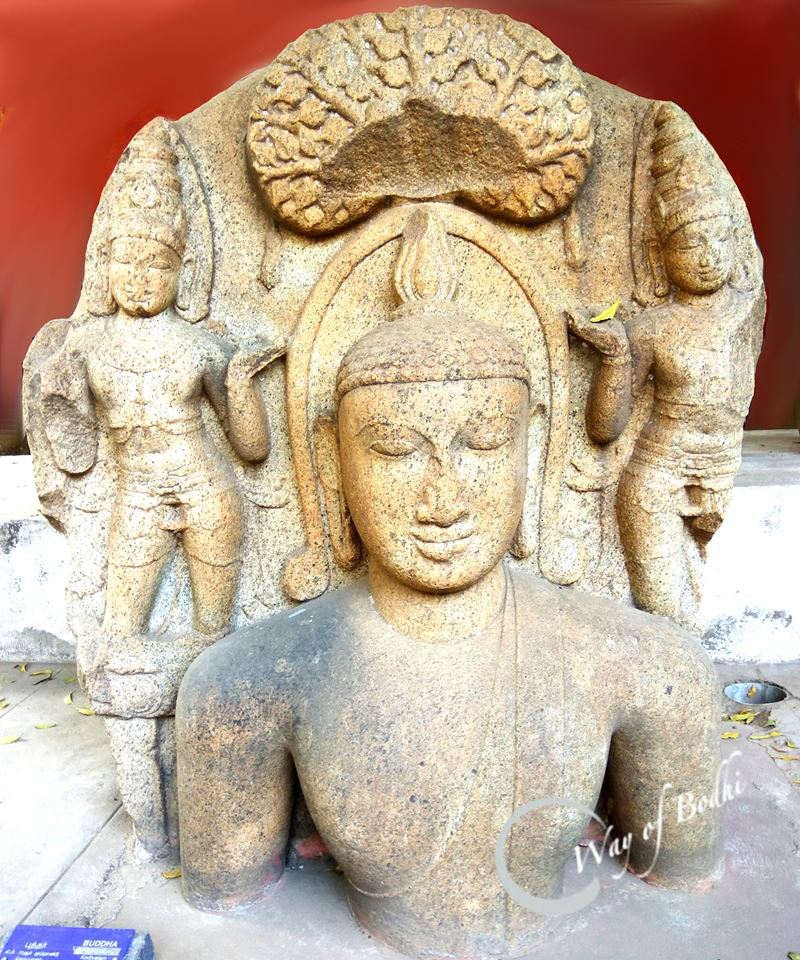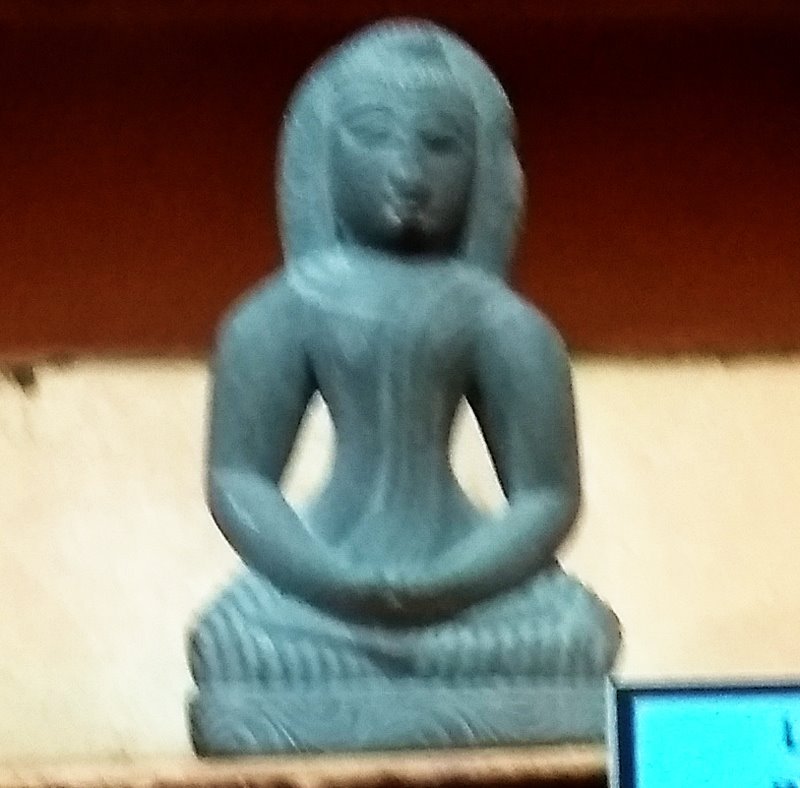Buddhism in Tiruchirappalli – Place of an Ancient Vihara

Tiruchirappalli is the heartland of erstwhile Chola kingdom. It is also home to some of the most interesting ancient Buddha statues in Tamil Nadu. These statues indicate that Buddhism, and particularly Mahayana Buddhism survived in the Chola heartland all through the Chola reign.
The statue shown above is one of the finest and most elaborately carved Buddha statues in Tamil Nadu that we have seen. It is a clear indication of the presence of Mahayana Buddhism in Tiruchirappalli (Trichy) during the Chola period. The Buddha is flanked by two Bodhisattvas. (Please see Buddha statue that looks like Guru Rinpoche in Mangalam for the Buddha statues with a clear Vajrayana touch, found in Musiri in Thiruchirapalli.) The above statue is from Kodiyalam / Ettarai in Srirangam Taluk of Tiruchirapally (Trichy). Only the top portion of this statue is recovered and it is kept in the Trichy Museum. This portion itself is of a height of 4’3”. So, the whole statue with pedestal would have been of a majestic height of 8ft. From the style of carving, this statue may be dated to about 12th-13th Century CE (AD).
The etymology of Tiruchirappalli also has a Buddhist connection. Palli in Tamil as well as all other Dravidian languages means a monastic centre of education belonging to Sramanas like Buddhists and Jains. According to the Orientalists Henry Yule and Arthur Coke Burnell, a 16th Century inscription gives the name of the place as ‘Tiru-śśilla-paḷḷi’ which they interpreted to mean ‘holy rock town’ [Ref 1]. However, śīla pronounced with a longer ‘i’ means discipline. So, in our opinion, the name would actually mean, ‘The monastic centre of sacred discipline’, a reference to a Buddhist university.
Seeing this statue, our imagination flew to how glorious that monastery housing this statue would have been. Sadly, this statue is currently kept in the open front yard of the Museum, with a garbage dumping ground just outside of it by the roadside.
Another Buddha statue from Kodiyalam (Tiruchirappalli) is also kept in the Tiruchirapalli Museum. Ushnisha of this statue is broken.


Another Buddha statue, a miniature one of 5 inches height, made of soapstone, can also be seen in Tiruchirapalli Museum. Period and the exact place of discovery are unknown.
Two more Buddha statues are found from Musiri, in Tiruchirapalli. One of them is kept at the Aravayee Amman Kovil in Mangalam, Musiri from where it was found. The other one, a small statue is currently at the Tiruchirapalli Museum. Please see Buddha statue that looks like Guru Rinpoche in Mangalam for the details of these two statues that reveal the presence of Vajrayana Buddhism in Tiruchirappalli (Trichy) region.
References
- Putheri (Buddheri) – The Southern most Stupa of Ancient India - January 19, 2023
- History of Buddhism in Kerala - January 12, 2022
- Buddhism in Kallakurichi, Tamil Nadu - March 4, 2021


I’m Dr. R. Purusothaman, works as Project Fellow in the Dept of Philosophy, University of Madras.
I focus Buddhist sites in Tamil Nadu.
This websites helps me a lot to explore many things related to Buddhism.
I feel like visiting those places after going through every article.
I wish to talk to you.
Thank you
With regards
Dr. R. Purusothaman
Dear Dr. Purusothaman,
Thanks for your message. We are happy to know that this website is giving you useful information. You can reach us at the contact details given at https://www.wayofbodhi.org/about-way-of-bodhi/#people-behind or at our facebook profiles
https://www.facebook.com/prabodha.yogi
and
https://www.facebook.com/yogini.abhaya
Regards,
Yogi Prabodha
திருச்சியில் புத்தர் பீடம் எங்குள்ளது?
8838706497 திருமுருகன்
Dear திருமுருகன்,
We are not aware of any Buddhist Vihara that is currently active in Tiruchirappalli. However, Tiruchirappalli was a thriving seat of Buddhism in the past. Some of the old statues are now in museums. There is one large statue still in a temple in Mangalam. More details about that can be found at https://www.wayofbodhi.org/ancient-buddha-statue-tamilnadu-lookslike-gururinpoche
Regards,
Yogi Prabodha